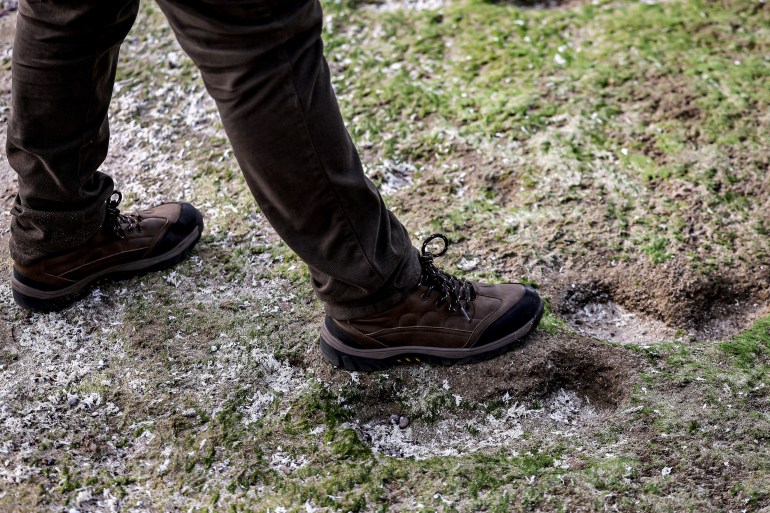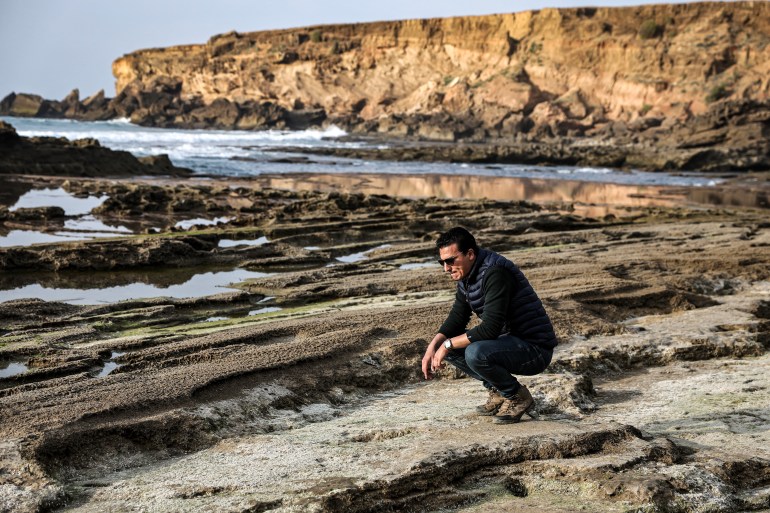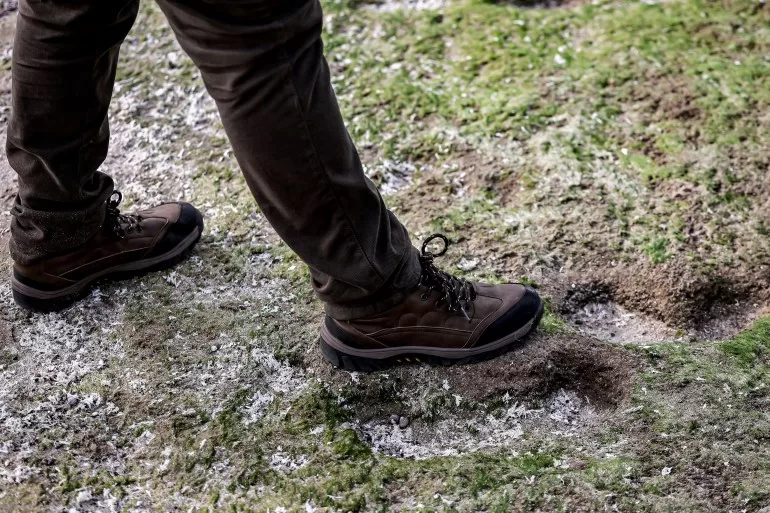In January, an international team of scientists from Morocco, France, Germany and Spain published details of a fascinating discovery: a set of well-preserved human footprints believed to be 100,000 years old.
The footprints are thought to be from a group of five individuals and were found on a rocky beach in a northern Moroccan town.
The research, published in the science journal Nature, adds to a growing body of work that’s helping scientists piece together the evasive, true origins of the human race. But while their discovery is an archaeological feat, coastal erosion threatens the existence of these ancient tracks.
Here’s what we know about this latest find and about other ancient human traces that scientists have discovered so far.

What did scientists find in Morocco?
In June 2022, archaeologist Mouncef Sedrati was leading field research focused on boulders close to the Moroccan shoreline in an area south of Tangier when his team stumbled on indentations in the ground at the city of Larache.
On closer look, they discovered the indentations were footprints of varying sizes. To Sedrati, a coastal dynamics and marine geology expert at France’s University of Southern Brittany, it was an “exceptional” sight.
“We weren’t 100 percent sure at first with the first print, but little by little, we found a second, third, then a very clear trackway and more and more,” Sedrati told Al Jazeera.”That’s when the doubt disappeared. The initial traces were left by healthy Homo [sapiens] on a sandy beach sediment around 100,000 years ago.”
About 85 footprints were found in total, likely made by a group of five humans who were walking towards the water, using the site as a path. These are the first early human tracks to have been discovered in North Africa and the Southern Mediterranean.
The arch of the indentations, rounded heels and the marks of short toes confirmed that they were tracks from Homo sapiens or modern humans like us. Their varying foot sizes suggested there were adults and children of different ages.
The scientists, though, still do not know what the group was doing at the location. Were they trying to gather food from the sea? Or were they simply navigating through the area and came across the beach route by chance?
Sedrati’s team studied sediment in the location and the footprints themselves to determine how long they might have been there.
Optically stimulated luminescence dating, a research technique that helps archaeologists determine when the minerals or carbon surrounding discovered artefacts were last exposed to heat or sunlight, allowed the researchers to estimate how old the prints might be.
They pegged the origins of the marks to the Late Pleistocene era, the period during which the last Ice Age happened. The preceding Middle to Late Pleistocene, encompassing the periods from 770,000 to 120,000 years ago, is broadly believed to be the age when ancient humans – separate from modern humans – roamed the earth.
Using a drone to take 461 photographs of the prints, the team processed the images using specialised software and extracted 3D models to accurately measure the depression and width of each print, and to gauge the ages of the group’s members.
The Larache footprints likely remained intact because of a combination of factors, the researchers wrote in the study, including their location, the soil type and the sea waves. The position of the beach on a rocky platform allowed the tides to bury the clay sediments forming the tracks, keeping them preserved until a recent erosion exposed them again.
For Sedrati, who is of North African descent, the discovery is personal.
“You can imagine how proud I am to lead the research team that made this discovery, even more so in a Moroccan city that is close to my heart,” he said, adding that he relished working with colleagues from other fields like geology to complete the study.
But there’s more work for the team to do. Only part of the prints have been processed, and the team has questions.
“What were the climatic and meteorological conditions of the time? Where was the coastline, the sea level?” Sedrati asked.

Where else have ancient human tracks been found?
Finding footprints that are thousands of years old is rare but not unheard of.
The oldest known human tracks were discovered in 1995. These were a set of three imprints belonging to a hypothetical “Eve” and called “Eve’s footprints”. They were discovered in Langebaan, a coastal town in South Africa’s West Cape province. “Eve” was thought to have lived about 117,000 years ago.
David Roberts, who formed part of the team that discovered those prints, said at the time that they were likely made on a steep dune during a storm before dry sand filled the indentation and hardened.
The prints measured 22cm (8.7 inches), about the same size as a modern woman wearing a US size 7.5. “Eve” was probably about 122cm (4ft) tall.
In 2022, another team of researchers found two human tracks on the roof of a cave in the same area. They were not well-preserved. The sediment the imprints had been made in had eroded, but the outlines of the footprints were still visible. The distance between the two tracks – 49cm (19 inches), consistent with the distance between an average human’s legs while striding – suggested to the team that it was from one of our direct ancestors, rather than Hominini – another species of the modern human that is now extinct.
Beyond the African continent, ancient tracks have also been discovered in the United States. In 2009, a park manager in White Sands National Park, New Mexico, found a footprint and led scientists to uncover thousands more spread over 325sq km (80,000 acres). These included child-sized footprints, and one set in particular showed a woman likely setting down a baby. Researchers in 2021 said they were likely made 22,800 years ago.

What do these findings tell us about prehistoric humans?
Paleoanthropologists – researchers studying the evolution of the modern human – said the prints together present us with a snapshot in time, helping us determine what life might have been like for our early ancestors.
One possibility, for example, is that ancient females painted their bodies with ingredients similar to modern make-up: Scientists who discovered Eve’s footprints also found ochre, a colourful pigment, in the same area. It’s believed the body paint was applied for rituals.
At other times, scientists have found hearths – indicating that older humans knew how to light fires. Bone remains and stone tools also point to the possibility that early humans first relied on dead animals for food and might have only started to set traps and hunt animals about 20,000 years ago.
But footprints also give scientists an estimated timeframe to work out when humans started branching out and moving across the globe.
For years, researchers held that modern humans first arrived in Alaska and spread through North America about 13,000 to 16,000 years ago after the last Ice Age.
But the footprints in the New Mexico White Sands Park disproved those studies. In the new scenario, humans were already spreading around New Mexico, and possibly travelled through the continent 23,000 years ago when glaciers were still expanding and spreading through the area.
Unfortunately, many of these discoveries, including the White Sands and Larache prints, are threatened by changing topography, partly linked to a changing climate. Sedrati’s group noted in its study that the rocky shore is collapsing from rising sea levels and that it could eventually disappear.
